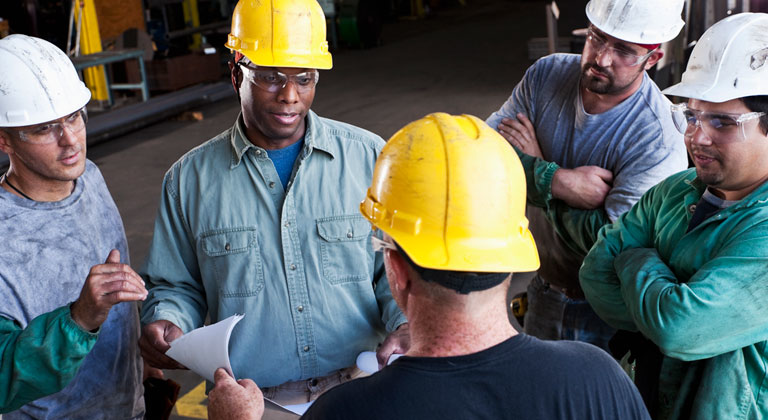Health and safety training
Properly training workers to recognize the hazards on the job helps make a safer workplace
In order to make sure you have a safe and efficient worksite, training is key. According to the Occupational Safety and Health Administration (OSHA), more construction workers die on the job than any other field. Their 2015 statistics show one out of every five worker deaths were in construction. More than half of those deaths fell under four distinct categories:
Falls—38.8%
Struck by object—9.6%
Electrocutions—8.6%
Caught in or between something—7.2%
When you provide your workers with health and safety training, they’ll be better able to recognize and minimize jobsite hazards.
OSHA training requirements
Many training standards are set by OSHA and require you to train employees in the safety and health aspects of their jobs.
Other OSHA standards make it your responsibility to limit certain job assignments to employees who are competent, qualified, or designated—meaning that they’ve had special previous training in or out of the workplace. Here’s how it breaks down:
Competent person: Someone with the training or experience to be able to identify existing and predictable hazards and has the authority to correct them.
Qualified person: Someone with a degree or certificate who has extensive knowledge to resolve problems on the job.
Designated person: Someone with the experience to be selected or assigned a specific job duty.
One other level, certified person, is someone who’s passed written and practical exams related to the work by a testing organization recognized by OSHA.
When it comes to your construction operation, OSHA has set up a number of training requirements for you to follow. You’ll find them in Title 29, Code of Federal Regulations (CFR), Part 1926. Some Administrative standards (Parts 1903 and 1904) and General Industry standards (Part 1910) apply to the construction industry as well. Additional training requirements may appear in certain other consensus standards (ANSI, NFPA, etc.) and are referenced in the various parts of the OSHA CFR, and are also mandatory.
You should also remember some states have implemented their own OSHA-approved state plan OSHA program. Those regulations could affect your employee training and differ from federal rules.
If you encounter a situation where there are no training requirements for a particular work activity, hazardous substance, tool, or piece of equipment or machinery, OSHA recommends you refer to the manufacturer’s recommendations for safety training and any other industry standards that apply.
Of course, safety standards change with time, and so do OSHA regulations. To make sure you’re following the most up-to-date regulations and interpretations of the rules, check out OSHA’s website at osha.gov.
Related resources
Effective safety meetings
Safety meetings are needed in every workplace. But how do you make sure they’re effective? We have some tips on how to help get the most out of yours.
Making the case for firing and avoiding wrongful termination
Before firing an underperforming worker, there are some steps you should take. We’ll walk you through the process.






